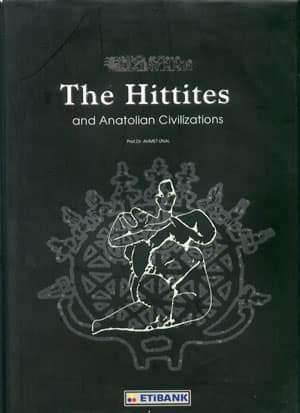Between the 15th and 13th centuries BC, the Hittites were one of the dominant powers of the Near East, coming into conflict with the New Kingdom of Egypt, the Middle Assyrian Empire and the empire of Mitanni. By the 12th century BC, much of the Hittite Empire was annexed by the Middle Assyrian Empire, with the remainder sacked by Phrygian newcomers to the region. From the late 12th century BC, during the Late Bronze Age collapse, the Hittites splintered into several small independent states, some of which survived until the eighth century BC before succumbing to the Neo-Assyrian Empire; lacking a unifying continuity, their descendants scattered and ultimately merged into the modern populations of the Levant and Mesopotamia.
The Hittite languagereferred to by its speakers as nešili, "the language of Nesa"was a distinct member of the Anatolian branch of the Indo-European language family; along with the closely related Luwian language, it is the oldest historically attested Indo-European language. The history of the Hittite civilization is known mostly from cuneiform texts found in their former territories, and from diplomatic and commercial correspondence found in the various archives of Assyria, Babylonia, Egypt and the broader Middle East; the decipherment of these texts was a key event in the history of Indo-European studies. Cultural links to prehistoric Scandinavia have also been suggested.
Scholars once attributed the development of iron-smelting to the Hittites, who were believed to have monopolized ironworking during the Bronze Age. This theory has been increasingly contested in the 21st century, with the Late Bronze Age collapse, and subsequent Iron Age, seeing the slow, comparatively continuous spread of ironworking technology across the region. While there are some iron objects from Bronze Age Anatolia, the number is comparable to that of iron objects found in Egypt, Mesopotamia and in other places from the same period; and only a small number of these objects are weapons. X-ray fluorescence spectrometry suggests "that most or all irons from the Bronze Age are derived from" meteorites. The Hittite military also made successful use of chariots.
Modern interest in the Hittites increased with the founding of the Republic of Turkey in 1923. The Hittites attracted the attention of Turkish archaeologists such as Halet Çambel and Tahsin Özgüç. During this period, the new field of Hittitology also influenced the naming of Turkish institutions, such as the state-owned Etibank ("Hittite bank"), and the foundation of the Museum of Anatolian Civilizations in Ankara, built 200 kilometers (120 mi) west of the Hittite capital of Hattusa, which houses the world's most comprehensive exhibition of Hittite art and artifacts

